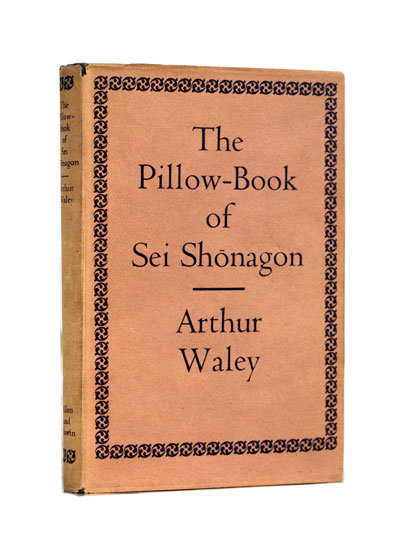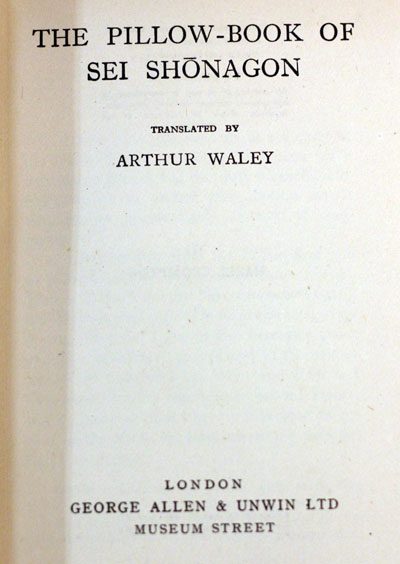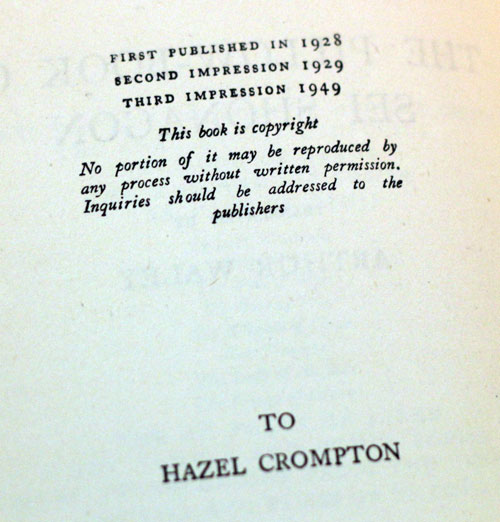About the book:
The Pillow Book (枕草子 Makura no Sōshi) is a book of observations and musings recorded by Sei Shōnagon during her time as court lady to Empress Consort Teishi (定子) during the 990s and early 11th century in Heian Japan. The book was completed in the year 1002.
In it she included lists of all kinds, personal thoughts, interesting events in court, poetry and some opinions on her contemporaries. While it is mostly a personal work, Shōnagon’s writing and poetic skill makes it interesting as a work of literature, and it is valuable as a historical document. Part of it was revealed to the Court by accident during Shōnagon’s life. The book was first translated into English in 1889 by T. Purcell and W. G. Aston. Other notable English translations were by Arthur Waley in 1928, Ivan Morris in 1967, and Meredith McKinney in 2006.
About the translator:
Arthur David Waley CH CBE (born Arthur David Schloss, 19 August 1889 – 27 June 1966) was an English Orientalist and sinologist who achieved both popular and scholarly acclaim for his translations of Chinese and Japanese poetry. Among his honours were the CBE in 1952, the Queen’s Gold Medal for Poetry in 1953, and he was made Companion of Honour in 1956.
Although highly learned, Waley avoided academic posts and most often wrote for a general audience. He chose not to be a specialist but to translate a wide and personal range of classical literature. Starting in the 1910s and continuing steadily almost until his death in 1966, these translations started with poetry, such as A Hundred and Seventy Chinese Poems (1918) and Japanese Poetry: The Uta (1919), then an equally wide range of novels, such as The Tale of Genji (1925–26), an 11th-century Japanese work, and Monkey, from 16th-century China. Waley also presented and translated Chinese philosophy, wrote biographies of literary figures, and maintained a lifelong interest in both Asian and Western painting.
A recent evaluation called Waley “the great transmitter of the high literary cultures of China and Japan to the English-reading general public; the ambassador from East to West in the first half of the 20th century,” and went on to say that he was “self-taught, but reached remarkable levels of fluency, even erudition, in both languages. It was a unique achievement, possible (as he himself later noted) only in that time, and unlikely to be repeated.”
– from wikipedia




